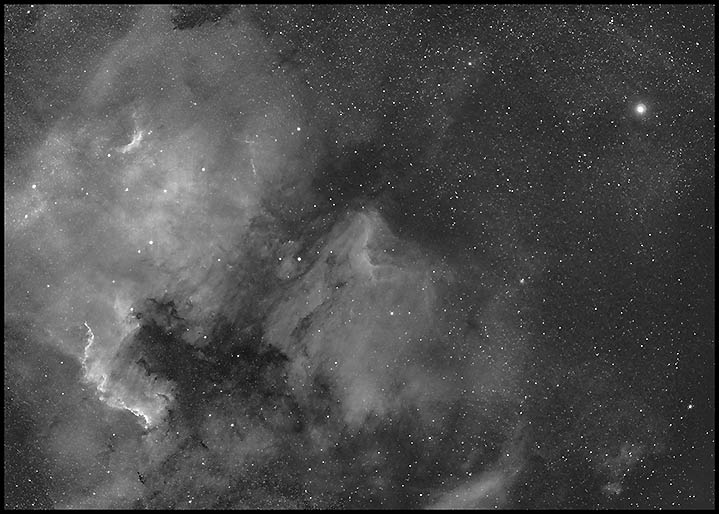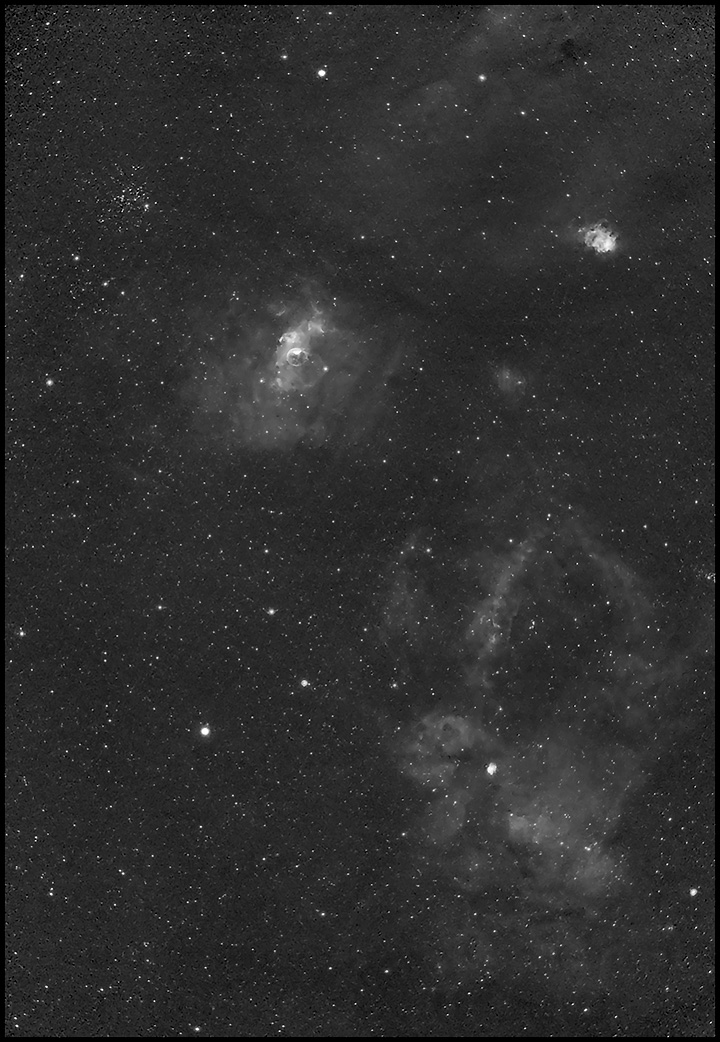A Triptych in Cygnus
10/18/2016. I returned to the fields just west of the North America nebula to pick up the Pelican Nebula and the star Deneb. The result is a hydrogen-alpha triptych.

NGC 7000 to Deneb
TMB92SS @ F4.4, Baader 7nm H-a, modified Canon 50D
~5 hours @ ISO 1600
Three panel mosaic. CLICK the pic for a better view.
In a week or so --after the Moon gets out of the way-- I'll see about adding O-III for a color rendiition.
Oh! Wait! I have RGB data from a 6D try during the last dark of the Moon. It doesn't line up exactly right, but it lines up well enough to have some fun:

6D color overlayed on 50D H-a data.
Not bad, eh?
(Click for better presentation.)
Remember (I do keep forgetting this) that the 6D can shoot O-III just fine. Its IR cut filter is only a problem for H-a; O-III is right in its wheelhouse. Also, straight RGB clearly has lots of potential, and the 6D's field of view is about the same size as the 50D triptych above. Never sell it short!
Color or O-III would be especially helpful to this field in Cassiopeia. I'll need a darker, clearer night to get it. Here's two nights' take (the orientation scale works well):

M52, the Bubble and the Lobster Claw (etc)
TMB92SS @ F4.4, Baader 7nm H-a, modified Canon 50D
20x600s (3h20m) @ ISO 1600
Yeah, yeah. CLICK the pic.
I'm a great fan of pure H-a and monochrome presentation, but more than most panoramas, that one will really live in color. Soon!
20161021. Told you some color would help!

M52, the Bubble and the Lobster Claw (etc)
TMB92SS @ F4.4, Baader 7nm H-a, modified Canon 50D
20x600s (3h20m) @ ISO 1600
+
33x180s RGB with Canon 6D @ ISO 1600 (1h 33m)
Yeah, yeah. CLICK the pic.
I'm not sure that the deeper darkness to the upper right of NGC 7635, the Bubble Nebula, is real or an accident of processing. For the moment, let's not worry too much about that. There'll be more data coming.